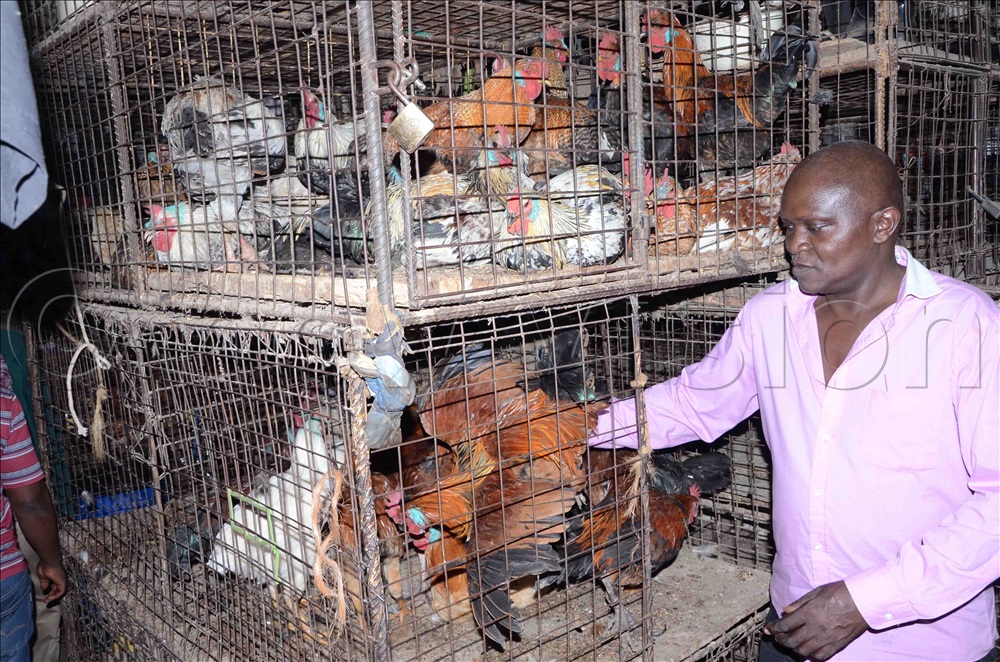By Joshua Kato
It is the Christmas week! Many farmers have reared livestock successfully, while others have food crops ready. The consumers are already flooding markets to stock food for Christmas, while farmers and middlemen are looking for the best bargains.
While there are all kinds of markets, including makeshift temporary ones, majority of urban dwellers buy from established markets.
These are permanent markets constructed in the big cities and towns that also include abattoirs for livestock. In Kampala, examples include St Balikudembe, Wandegeya, Nateete, Nakawa, Kalerwe and Busega, etc. Gulu, Masaka, Lira, Mbarara, Arua and Fort-Portal also have got such markets.
“This is where city residents buy their Christmas food from,” says Sarah Namulindwa, a trader in St Balikuddembe Market.
For a farmer to sell to these large markets, they have to visit and identify their customers before they bring their produce to the markets.

“Unlike in the rural mobile markets, where anybody can bring produce on market day and sell, it is impossible to do so in the big city markets. You need a permanent stall or you should have identified a trader who will take your produce,” Namulindwa says.
Vegetable prices drop
While vegetables have been relatively expensive this year, irrespective of the fair rains, prices have started dropping drastically in the last two weeks thanks to the beginning of harvests by farmers across the country.
Vegetable farmers, who planted at the beginning of the first rains in August, started harvesting in November. This has given hope of lower prices this Christmas.
In most markets across the city, a basket with at least 12 tomatoes goes for as low as sh4,000 at the moment, compared to sh6,000 in October.
There are more supplies of green vegetables like dodo (amaranthus) nakati, garden eggs and sukuma wiiki. It is a relief for both traders and consumers because at the peak of the vegetable scarcity in July and August, some of the cabbages on the market were imported from Kenya.
“The vegetable corridor of Wakiso district includes areas, such as Busukuma, Namayumba and Masulita is now yielding and that is why supply is increasing,” Hajjati Zaina Kizito, a vendor at Kalerwe market says.
This supply will go on through the Christmas season. According to a survey across Kampala city markets, Kalerwe had the cheapest vegetables, followed by Nakawa, Busega, Nateete and Wandegeya, while the most expensive was Nakasero.
Consistent chicken prices
Chicken prices have remained consistent for months now, compared to how they were at the same time last year. Broilers range from sh16,000 to sh19,000 in most city markets, while off layers range from sh25,000 to sh28,000.
Last year at the same time, prices for broilers rose to over sh20,000, while off layers reached sh30,000. One of the reasons for the lower prices this year is the availability of maize on the market.
Maize is a key ingredient for processing feeds. Last year, the price of feeds had risen by over sh1,000 to an average of sh3,000 per kilogramme. This year, maize prices have been lower, hence the consistent prices for chicken.
Beef sh2,000-sh3,000 added
Beef prices have had the least increase in the last one year. Farmers say there has been a steady supply of beef across all markets in the country and this has kept prices low.
There are more farmers ‘fattening’ cows for beef than before and this has improved the supply of beef cattle. Last year at this time, a kilogramme of beef cost sh14,000 in lower city markets like Kalerwe and sh16,000 in upper markets like Nakasero. Today, it has increased from sh16,000 to sh18,000.
Banana prices remain high
For matooke, consumers are likely to face the highest prices this Christmas in a long time.
Since June, a 60kg bunch has averaged sh35,000 across markets in Kampala and sh13,000 in banana growing areas of Bushenyi, Isingiro, Kabarole and Ntungamo. The average price of a good bunch is likely to be sh35,000.
“When prices dropped to their lowest in 2020, many farmers abandoned banana growing and now supply has been low,” says Joseph Mugula, a dealer at Nakawa market.
Prices dropped to as low as sh5,000 in the farms and sh10,000 in the markets in 2020-2021. A total of sh35,000 is the expected average price for a good bunch this Christmas.
Goat prices rise
Ordinary goat prices have risen by between sh50,000 and sh70,000 in 2023, compared to previous years. However, the price per kilogramme in most markets in the city has been between sh19,000 and sh22,000.
Traders think that there will be a slight increase from December 23-25, mainly because of the festive season.
At most farms in Kiboga, Kyankwanzi, Mubende, Ssembabule, Kiruhura, Kyotera and Rakai districts, a goat for slaughter averages sh200,000 up from sh150,000 last year during Christmas.
Both farmers and middlemen point to a low supply of goatmeat. A quarantine, recently declared in parts of Lyantonde and Lwengo districts, may also slow down supply.
“We have castrates (endawo) at sh245,000 each,” says Grace Bwogi, a known goat farmer in Kyotera.
Averagely across city markets, a kilogramme of goats’ meat now costs between sh19,000 and sh22,000. It will increase to sh24,000 in most cases.





